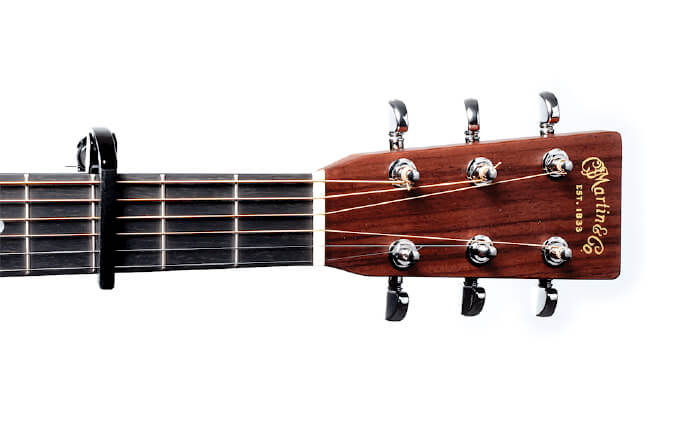How To Put a Capo on a Guitar
Correct placement of your capo is essential. The capo should sit just behind the fret, not between frets or on top of frets – much like your finger when fretting the note. This will ensure a clear tone, free of buzzing or rattling. Finding the right pressure for the capo is also important. Too little pressure and the strings will buzz and lose their tone. Too much pressure is just as bad—the strings will go out of tune.

How to apply the correct amount of pressure depends on the type of capo you’re using. D’Addario capos have knobs called micrometers which that adjust the tension. You’ll want to turn that knob until the strings ring open without any buzz. It may take a little practice, but you will eventually be able to hear and feel the right amount of pressure for your instrument.
How to Put a Trigger Capo on a Guitar
Trigger capos open and close using a spring. Squeezing the ‘arms’ together opens the capo up and releasing them allows the spring to clamp it down. To place it on your guitar, simply choose your fret, squeeze the arms, place it in position, and release the arms. If you’re using a D’Addario capo and haven’t already dialed in the correct pressure for your instrument simply tighten the capo by turning the dial until the strings ring open without any buzz. As a bonus, you can also easily clamp trigger capos to the headstock of your instrument while not in use for easy access when you need it.
How to Put a Screw Capo on a Guitar
A Screw capo is an adjustable capo which secures to the guitar’s neck using a variable tension screw, instead of a spring-loaded clamp. Screw capos don’t stick out as far from your neck as many other capo designs, but they do take moments longer to apply and remove. Nonetheless, the design is good when you want a low-profile, accurate capo that doesn’t make up space in storage.
How to Put a Cradle Capo on a Guitar
The Cradle Capo is a premium option for players who are particular about their tension. It can live on the neck of your guitar behind the nut so whenever you need it, it is there. Our unique self-centering design applies even, consistent pressure against every string, assuring there is no buzz.